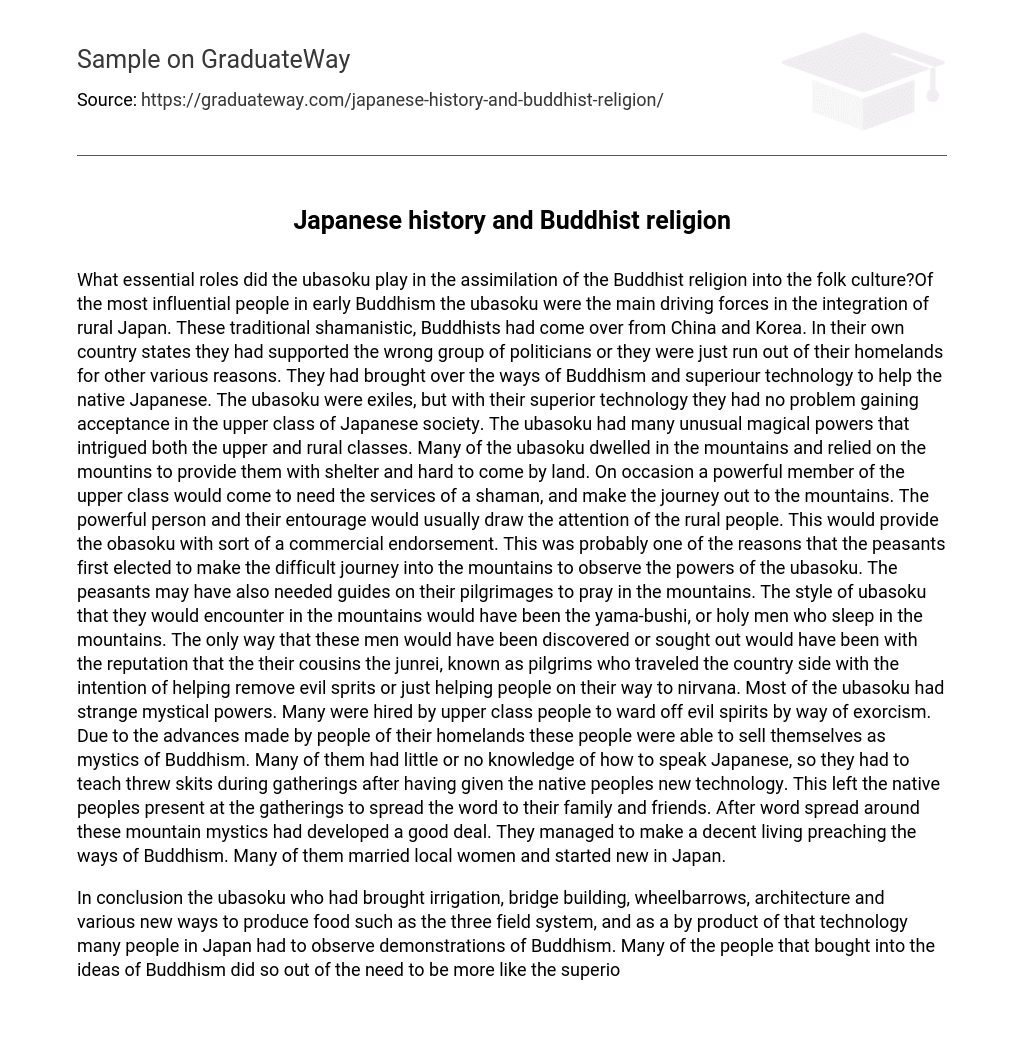What significant roles did the ubasoku fulfill in the fusion of Buddhism with the folk culture? Being among the most influential individuals in early Buddhism, the ubasoku played a crucial role in integrating rural Japan. These traditional shamanistic practitioners, who originated from China and Korea, migrated due to unfavorable circumstances such as supporting the wrong political groups or being expelled from their homelands. Bringing with them Buddhist teachings and advanced technology, they easily gained acceptance among the upper class in Japanese society. The ubasoku possessed extraordinary magical abilities that captivated both the upper and rural classes alike. Many of them resided in the mountains, relying on this land for shelter and scarce resources. Occasionally, a powerful member of the upper class would seek a shaman’s assistance and travel to the mountains, drawing attention from the rural community. This inadvertently acted as a form of advertising for the ubasoku. Such factors likely motivated peasants to embark on challenging journeys into the mountains to witness the ubasoku’s extraordinary powers firsthand. Additionally, guides may have been needed by peasants on their pilgrimages to pray in these sacred mountains.The style of ubasoku encountered in the mountains was yama-bushi, holy men who sleep in the mountains. These men were discovered or sought out based on the reputation of their cousins, the junrei, who were known as pilgrims traveling the countryside to help remove evil spirits or assist individuals on their journey to nirvana. Most ubasoku possessed mystical powers and were often hired by upper-class individuals to perform exorcisms and ward off evil spirits. These individuals capitalized on the advancements made by their homelands and presented themselves as mystics of Buddhism. However, many of them had limited or no knowledge of Japanese language, so they relied on skits during gatherings to teach and communicate with the native people, after introducing them to new technology. Through word-of-mouth, these mountain mystics gained popularity and transformed their preaching into a decent livelihood. Some even married local women and settled in Japan.
In conclusion, the ubasoku introduced various technological advancements in Japan such as irrigation, bridge building, wheelbarrows, architecture, and innovative agricultural methods like the three field system. As a result of these developments, many Japanese people had to witness Buddhism demonstrations. Some individuals embraced Buddhism in order to emulate the more advanced cultures of Korea and China. Meanwhile, others accepted Buddhism because Shintoism was seen as the ideal religion to incorporate the principles of another faith. The ubasoku played a crucial role in convincing the simpler rural population of Japan due to their intelligence and ability to overcome challenges like escaping imminent death in their native land and navigating the treacherous waters between Korea and Japan. Additionally, the ubasoku’s knowledge and skills contributed to their success. Many of them even pursued a career as holy individuals. Bibliography: none





